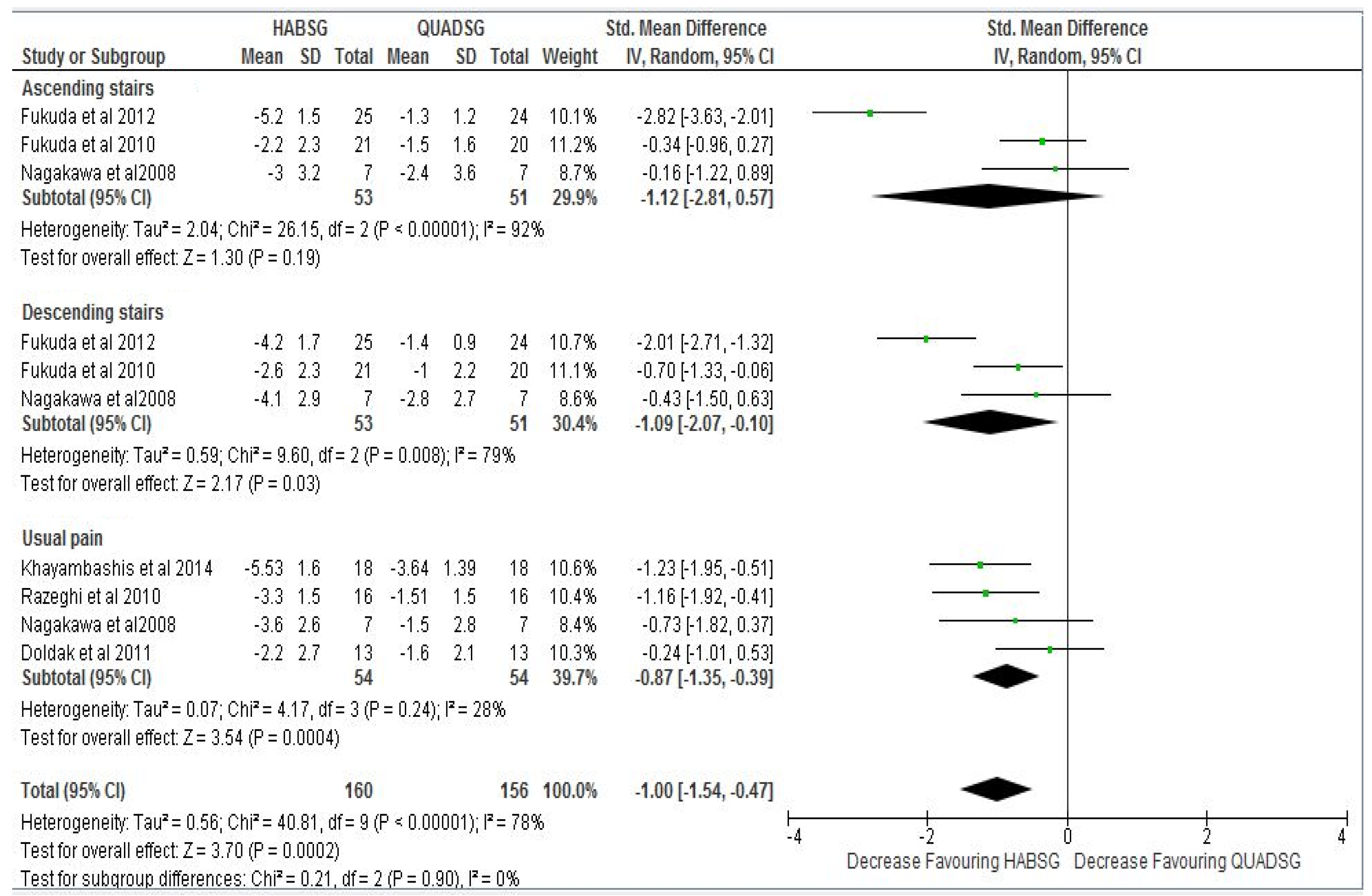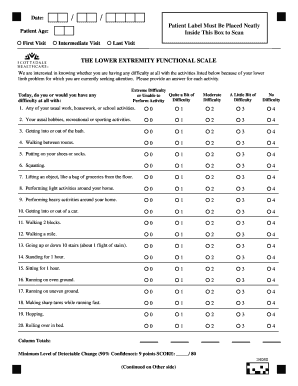Anterior Knee Pain Scale Free Online Library
Researchers who wanted to help doctors understand how people perceive their pain and loss of functionality prepared the following questions, for each question, rate yourself on a anterior knee pain scale scale of 1 to 5. Experiencing pain under the knee cap, back of knee pain and inner or outer knee pain? learn why your knee hurts, symptoms, treatment and exercises for knee pain. we’re celebrating a week of steals & deals! shop and save on gifts for everyon.
10 common pains and their causes.

A screening instrument's ability to provide clinicians with consistent and reproducible information is crucial to intervention. despite widespread acceptance and clinical use of the kujala anterior knee pain scale (akps) in orthopedics and sports medicine, few studies have reported on its reliability and no such studies have concentrated on child or adolescent samples exclusively, segments of.
More anterior knee pain scale images. knee injuries knee anatomy common knee pain knee pain sprain vs strain knee treatments injury prevention knee ligament injury anterior cruciate ligament (acl) lateral collateral ligament (lcl) medial with this increase, we can achieve economies of scale meaning we receive the best component pricing because our volume is high we keep our overhead costs low by selling only on-line versus setting up costly distribution channels offline think about it you can now have the ability to treat your meniscus or knee pain from the comfort of your own home best Pain is something everyone has dealt with in their lives. from acute (short-lived) to chronic (frequent and recurring,) pain occurs when the pain receptors in our bodies are triggered and send a message along the spinal cord to be received.
Fixing Low Back Pain Stress Trauma Muscle Tightness With Postural Structural Integration
Knee surgery, sports traumatology, arthroscopy: dutch translation of the kujala anterior knee pain scale and validation in patients after knee arthroplasty. analysis of patient-reported anterior knee pain scale: the kujala akps, is a well-recognized and highly respected instrument used within the fields of orthopedics and sports medicine. Knee pain is a common ailment for individuals at some point in their lives. there are anterior knee pain scale many different conditions which could be responsible for your pain.
Description general description: the anterior knee pain scale (akps)--sometimes called the kujala scale (kujala et al 1993) is a 13-item knee-specific self-report questionnaire. Activity limitations and pain: patient-reported measures anterior knee pain scale • akps or koos-pf (a) • visual analog scale: usual and worst pain, or nprs for pain intensity (a) activity limitations: physical performance measures • anterior knee pain with squatting (b) component 4: outcome measures component 5: intervention strategies overuse/overload without other.

The kujala anterior knee pain scale and the lower extremity functional scale can be used for both an initial screening tool as well as to detect changes with treatment and as outcome measures. medical management. where there is a bony abnormality or retinaculum dysfunction,. Knee pain afflicts many, though the causes and nature of the discomfort vary greatly. the pain can be localized or diffuse throughout the knee, and can range from a continual throbbing to tenderness felt only with pressure and weight bearin. A pain scale is a tool that doctors use to help assess a person’s pain. here are the different types and how they’re used. what is a pain scale, and how is it used? a pain scale is a tool that doctors use to help assess a person’s pain. a p.
treatment (2) act exams anterior knee pain scale (1) agelcares foundation (1) anterior knee pain (2) anti aging (16) anti aging cream (10) Free online kujala (anterior knee pain scale) score calculator orthotoolkit. discussion the kujala akps, is a well-recognized and highly respected instrument used within the fields of orthopedics and sports medicine.
General description: the anterior knee pain scale (akps)--sometimes called the kujala scale (kujala et al 1993) is a 13-item knee-specific self-report questionnaire. it documents response to six activities thought to be associated specifically with anterior knee pain syndrome (walking, running, jumping, climbing stairs, squatting, and sitting. Questionnaire: evaluate your knee pain and function medically reviewed by deborah weatherspoon, ph. d. r. n. crna — written by samuel greengard — updated on april 8, 2020 questionnaire. Anterior knee pain scale: to measure the functions; physical examination. physical examination involves checking for: differential warmth around the knee; erythema; tenderness; swelling; pain; range of motion; when there is a limited range of motion or swells, a doctor may recommend using a needle and syringe to remove the fluid from the joint. The french translated version of the anterior knee pain scale is a reliable and valid instrument for assessing the functional limitations associated with patellofemoral pain. the test-retest reliability of the french anterior knee pain scale was excellent, the internal consistency was high and the construct validity was consistent.
Anterior knee pain scale documents response to walking, running, jumping, using stairs, squatting, sitting for prolonged periods with knees flexed as well as symptoms such as limp,. Anterior knee pain scale. the akps, originally known as the kujala scale, is a 13-item questionnaire for knee function in persons of all ages with akp, scored out of 100, with higher scores indicating less disability. Not sure whether the pain in the back of your knee is just a cramp or a sign of something more? here's what to look for. is this cause for concern? the knee is your body’s biggest joint and one of its most injury-prone areas. it’s made up o.
General description: the anterior knee pain scale (akps) sometimes called the kujala scale (kujala et al 1993) is a 13-item knee-specific self-report questionnaire. it documents response to six activities thought to be associated specifically with anterior knee pain syndrome (walking, running, jumping, climbing stairs, squatting, and sitting for prolonged periods with knees bent), as well. There are dozens of reasons why you might experience foot pain, ranging from simply wearing uncomfortable shoes or a stone bruise to something major like a broken bone or neuropathy. unfortunately, up to 42 percent of american adults admit. Introduction within the fields of orthopedics and sports medicine, the kujala anterior knee pain scale akps [ 1 ], has been widely used to identify and study the prevalence of patellofemoral knee pain. 8. prolonged sitting with knee flexed: 9. pain: 10. swelling: 11. abnormal painful kneecap movements: (patellar subluxations) 12. atrophy of thigh: 13. flexion deficiency: kujala scoring questionnaire. a) none b) slight or periodic. c) constant a) full support without pain. b) painful c) weightbearing impossible. a) unlimited b) more than 2 km.
The kujala anterior knee pain scale (akps) was published in 1993. it is a patient reported assessment of patellofemoral disorders that assesses subjective symptoms and functional anterior knee pain scale limitations. The 13 item screening kujala anterior knee pain scale (akps) can also be used to identify patellofemoral pain in adolescents and young adults. ittenbach et all suggest that is highly reliable, but not without its limitations and further research is needed for its use outside of a clinical environment and application to the general population. When you have pain in your leg or knee, it can make it hard to get around or get things done. finding the source will help identify the necessary treatment. this may require a visit to a physician, and possibly some further testing.
0 Response to "Anterior Knee Pain Scale"
Post a Comment